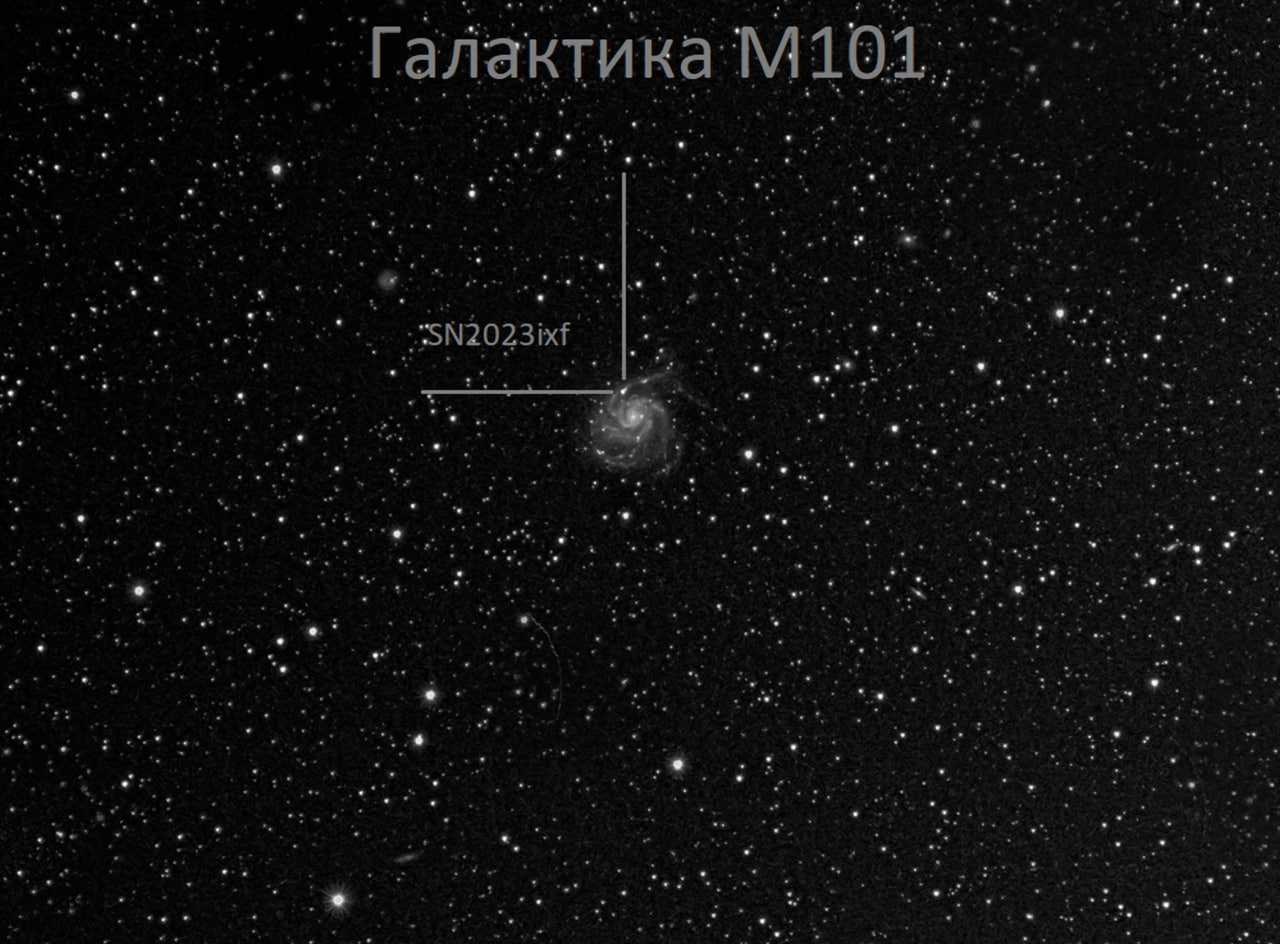Scientists at the Immanuel Kant Baltic Federal University Astronomical Society were able to capture a rare astronomical phenomenon: a supernova explosion (a phenomenon in which a star dramatically increases its brightness) in a neighboring galaxy. The star (SN 2023ixf) was observed in the M101 galaxy (also known as the "Helix" because of its distinctive spiral shape) on May 19, 2023. And on the night of May 23 the university astronomers managed to take a clear picture of it.
On the processed image, composed of dozens of frames from the astronomical camera, a bright spot at the edge of the spiral disk M101 is clearly visible. Despite its tiny size, it shines brighter than the core of the galaxy, which is no smaller than the Milky Way and consists of hundreds of billions of stars.
| Alexey Baigashov, Head of the IKBFU Astronomical Society: |
|
Such a bright supernova flash, which we have been observing for several days now, is the result of the collapse of a star, a process of explosive destruction of its structure. The result is the release of enormous energy, after which we see the brightest flash, comparable to the glow of billions of stars. |

User profile for student
User profile for student
I give consent to the processing of the personal data provided, with Personal Data Processing Policy acquainted
Confirm consent